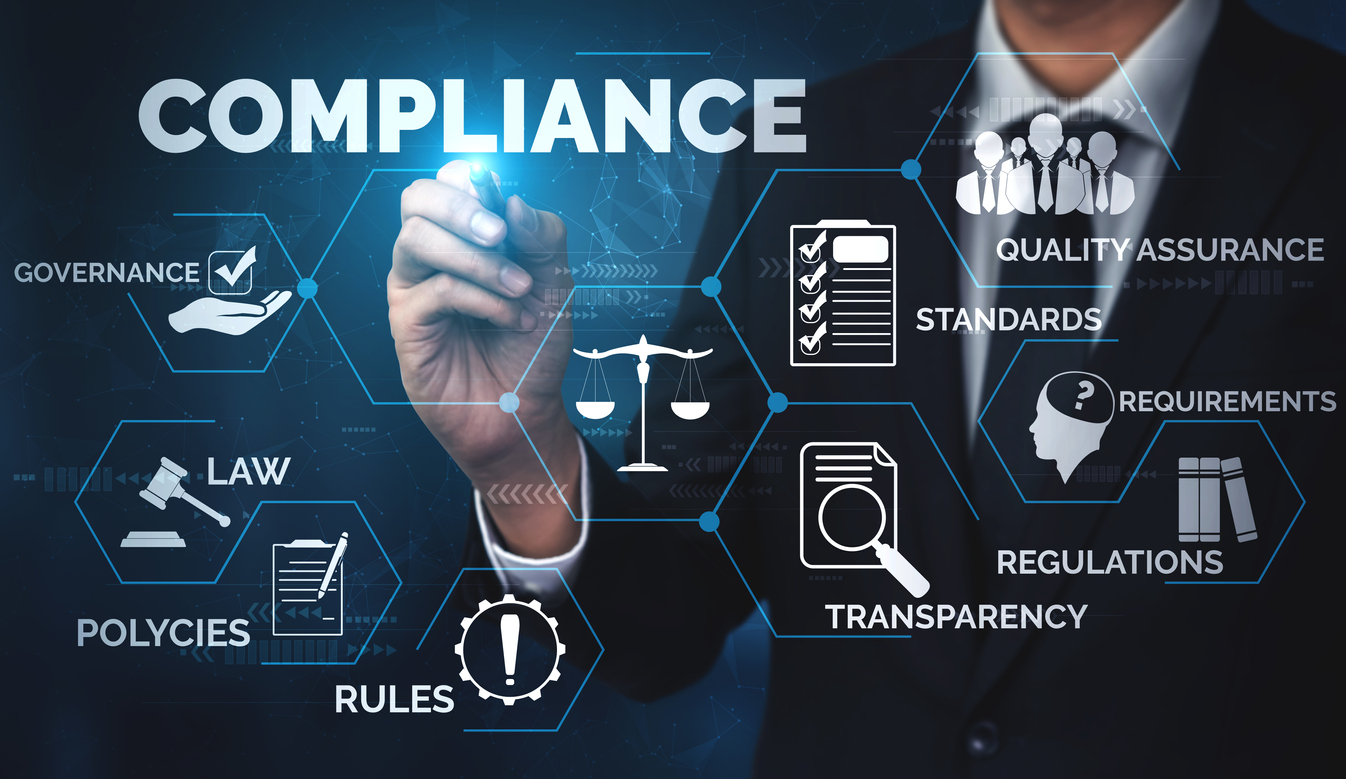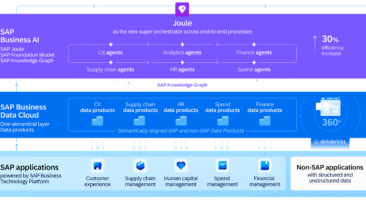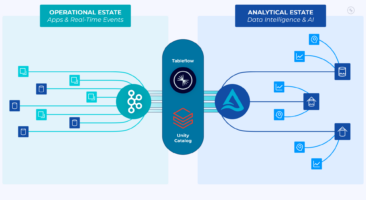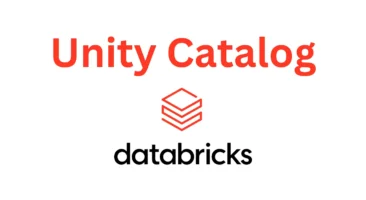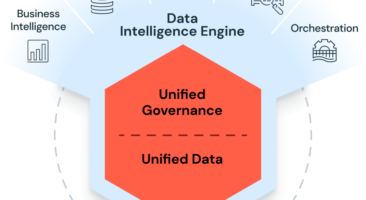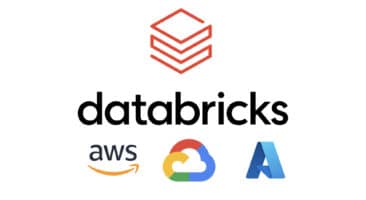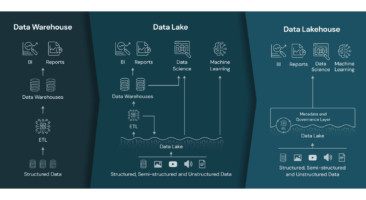The Fundamentals of Data Governance in Data Warehouse and Integration Projects
Data Governance is critical to unlocking the full potential of your data, providing invaluable insights and opportunities for growth. In this blog post, we’ll look at what data Governance is, best practices in implementation, tools/technologies available to support it, and the benefits of effective data Governance – essential information for IT decision-makers seeking data warehouse solutions, integration platforms, or process automation systems.
What is Data Governance?
Data governance refers to overseeing data assets to ensure they are accurate, complete, and secure. It involves assigning accountability for their care and having decision rights over handling it. Ultimately, its goal is to enhance data quality through standardizing processes and adhering to regulations.
At its core, data governance ensures that organizations possess an in-depth knowledge of their critical business information. It allows them to make more informed decisions based on reliable insights from trusted sources. Proper data governance will reduce operational costs due to improved efficiencies, improved customer satisfaction through higher-quality products or services, and regulatory compliance adherence, reducing risk exposure.
Defining Data Governance
Data governance manages and protects data assets through policies, procedures, and standards. It involves defining decision rights and accountability frameworks and ensuring data quality to support business objectives. The critical components of effective data governance include:
- establishing clear ownership and stewardship roles for data assets,
- setting up a framework for decision-making processes that involve data-related issues, and
- implementing controls to guarantee compliance with relevant laws or regulations.
Data governance involves managing and protecting data assets through policies, procedures, and standards to support business objectives. It requires strong leadership commitment from top-level executives to deliver tangible results across all organizational, functional areas.
Although related concepts, there is a difference between data management and data governance. While the former focuses on technical aspects such as storage architecture or integration processes, the latter deals with organizational structures to manage information assets strategically. In summary, the successful execution of an enterprise-wide Data Governance program requires strong leadership commitment from top-level executives willing to invest in developing sound strategies that deliver tangible results across all functional areas within an organization.
Importance of Data Governance
Data accuracy and integrity are vital for any organization that relies on accurate information to make informed decisions. Data governance provides the framework for establishing accountability, decision rights, and standardized processes around data management. It ensures that the quality of your data meets internal standards and external regulations.
Mitigating risks associated with using incorrect or sensitive data is another key benefit of implementing a sound data governance strategy. Organizations can reduce their exposure to legal and reputational risks by providing clear guidelines for managing sensitive information. Data governance also helps ensure that only authorized personnel have access to sensitive information.
Improving operational efficiency through streamlined processes is another important aspect of effective data governance. By enforcing consistent processes across all areas of the organization, you can eliminate duplication of effort while reducing errors caused by inconsistent procedures.
Overall, investing in a comprehensive data governance program enables better decision-making and enhances security measures while improving overall productivity within an organization.
Data Governance Best Practices
When it comes to data governance best practices, having a solid framework in place is crucial. This includes defining roles and responsibilities for managing data, setting clear policies and procedures, establishing guidelines for data quality management, and ensuring compliance with relevant regulations.
One of the key components of effective data governance is enforcing strong security measures to protect sensitive information. This involves implementing access controls, monitoring activity logs, conducting regular audits and risk assessments to identify any vulnerabilities or potential breaches. By prioritizing these practices within your organization’s approach to data management, you can unlock the full potential of your digital assets while minimizing risks associated with improper handling or misuse.
Creating a Data Governance Framework
Defining data ownership and responsibilities is a crucial step in creating a data governance framework. Organizations must identify who is responsible for managing, maintaining, and securing their data assets to ensure accountability. This includes defining roles such as data stewards and owners who are accountable for the accuracy, completeness, consistency, timeliness, security of critical business information.
Identifying critical data elements helps organizations prioritize which datasets require more stringent governance controls. By understanding which datasets directly impact business objectives or contain sensitive information that could result in regulatory noncompliance or reputational damage if compromised; organizations can focus on implementing appropriate policies and guidelines to optimize their management practices.
Establishing data classification guidelines provides clarity around how different types of information should be treated based on their sensitivity level. Policies outlining how to classify structured/unstructured formats like customer records or intellectual property will enable the organization to take appropriate measures when handling confidential/sensitive information so they can safeguard against unauthorized access/usage while also facilitating effective utilization by authorized personnel through secure channels.
Establishing Data Policies and Procedures
Developing a comprehensive data dictionary is essential in establishing data policies and procedures. This document provides a detailed description of all the data fields used within your organization, helping to ensure consistency and accuracy across all departments. Additionally, setting standards for naming conventions and metadata management will help maintain organization-wide clarity on interpreting and using specific pieces of information.
As part of your efforts towards better governance, outlining the process for requesting access to sensitive or restricted data can mitigate risks associated with unauthorized access. Access requests should be approved by designated personnel trained in proper security protocols; this ensures that only authorized personnel are granted access to valuable company resources.
Key takeaways:
- Develop a comprehensive data dictionary
- Set standards for naming conventions and metadata management
- Outline transparent processes for requesting access to sensitive or restricted data
Implementing Data Quality Management
Regular quality assessments are critical in ensuring that your data is accurate, consistent, and reliable. It includes assessing all newly acquired datasets to ensure they meet industry-standard benchmarks and internal datasets. Incorporating feedback from end-users during assessments can also help improve overall dataset quality.
To implement effective data quality management, consider the following:
- Develop standard operating procedures for conducting routine data quality checks.
- Define clear performance metrics to evaluate dataset accuracy and completeness.
- Establish guidelines for addressing identified issues, such as updates or corrections.
- Utilize automated tools to streamline the process of assessing large datasets.
Organizations can gain greater confidence in their decision-making processes by prioritizing data governance practices like regular assessments and incorporating user feedback into evaluations while avoiding costly errors associated with poor-quality data.
Enforcing Data Security and Privacy
Restricting access to confidential information is crucial for maintaining data security and privacy. Role-based authorization can help ensure that only authorized personnel can access sensitive data, minimizing the risk of breaches or leaks. In addition, anonymizing customer records following privacy laws such as GDPR, CCPA, etc., can further protect personal information from being misused or mishandled.
Maintaining an audit trail of who had accessed what information, when they did so, and what actions they took is another crucial aspect of enforcing data security and privacy. It helps monitor activity within the system, identify potential vulnerabilities or suspicious behavior, and take appropriate action if necessary.
- Restrict access to confidential information by role-based authorization.
- Anonymize customer records following privacy laws such as GDPR, CCPA, etc.
- Maintain an audit trail of who had accessed what information, when they did so & what actions they took.
By implementing these measures alongside a solid data governance framework, organizations can better protect their valuable assets while utilizing them effectively for business insights and growth opportunities.
Data Governance Tools and Technologies
Effective data governance is crucial for businesses to ensure their data is accurate, consistent, and secure. Organizations must invest in data governance tools and technologies to achieve this goal. Data catalogs are one such tool that can help organizations manage their data assets by enabling easy discovery of relevant datasets. Metadata management systems can also play a critical role in maintaining consistency across various databases, applications, and reports by providing a centralized repository for metadata information.
Master Data Management (MDM) solutions are another essential component of effective data governance strategies. MDM solutions enable businesses to maintain high-quality master data by ensuring accuracy and consistency across all systems. With MDM tools, IT decision-makers can easily manage complex business processes involving different departments or regions while reducing the risk of inaccurate or inconsistent master datasets.
Overall, investing in robust and scalable data governance tools should be a top priority for businesses looking to unlock the full potential of their valuable business intelligence (BI) analytics programs through better quality control over stored enterprise-level information assets–which could provide significant competitive advantages when leveraged well!
Data Catalogs
A data catalog system can bring numerous benefits to your organization’s data governance strategy. By implementing a data catalog solution, you can improve the accessibility and visibility of your organization’s data assets. With features such as searching for specific datasets or viewing metadata information, you can increase productivity by reducing the time spent on finding relevant datasets. Additionally, a well-designed data catalog tool can enhance collaboration among teams by enabling them to share their insights and knowledge about different datasets.
When selecting a suitable data catalog solution, there are several features that you should look out for. A good system must have strong search capabilities with options to filter results based on various parameters such as date modified or file type. It should also provide comprehensive metadata management functionalities that enable easy tracking of lineage information and maintenance of controlled vocabularies. Furthermore, an effective tool must support integrations with other systems like ETL tools or BI applications.
Ensuring accurate and consistent dataset descriptions is critical in any successful data governance program; this is where a reliable metadata management system comes in handy to maintain consistency across all documentation types while streamlining processes throughout your enterprise.It’s crucial when deploying any new software that policies are put into place from the outset ensuring quality control measures are followed for ongoing monitoring purposes which will help avoid both error-prone manual workarounds and waiting until issues arise before taking action.The implementation of these measures along with utilizing advanced technology solutions will assist IT decision makers seeking Data Warehouse/Integration & Process Automation related projects achieve optimal results regarding their Data Governance initiatives
Metadata Management Systems
Effective data governance requires a robust metadata management system that ensures accurate, consistent, and reliable information across all systems. Metadata provides context to the data, helping organizations understand how it is created, managed, and used. Organizations may struggle with compliance issues or poor decision-making without proper metadata management due to incomplete or inaccurate information.
Critical components of an efficient metadata management system include:
- Data lineage tracking
- Automated discovery and harvesting
- Impact analysis for changes to data sources
- Integration with other methods, such as master data management solutions
To effectively manage metadata across different systems, best practices include:
- Establishing clear ownership and accountability over the creation and maintenance of metadata
- Adopting standardized naming conventions and unique identifiers for all objects within the organization’s ecosystem.
- Regularly auditing the accuracy of existing metadata records
- Ensuring that any updates are propagated consistently throughout all relevant systems
Overall, implementing a robust metadata management system enables more effective data governance by providing greater visibility into organizational assets while improving consistency in using this information.
Master Data Management Solutions
Accurate and consistent master data is crucial to the success of any organization. Inaccurate or inconsistent data can lead to costly errors, lost opportunities, and a lack of trust in the information being used for decision-making. Implementing Master Data Management (MDM) solutions can help organizations ensure their master data is accurate, reliable, and up-to-date.
However, implementing MDM solutions comes with its own set of challenges. These include complex integration requirements, navigating conflicting business processes across departments or regions, and limited resources for managing ongoing maintenance. To overcome these challenges, organizations should invest in comprehensive planning upfront by identifying key stakeholders who will be involved in the implementation process and ensuring clear communication throughout.
Various types of MDM solutions are available today – from traditional on-premise software to cloud-based platforms with built-in artificial intelligence capabilities that automate many aspects of governance, such as cleansing and classification. The choice depends on factors like budget constraints, existing infrastructure complexity & scalability needs alongside technical expertise available within an organization seeking these services; hence it’s essential to factor in all elements before making a final selection based solely on one aspect over others.
Benefits of Data Governance
Effective data governance is essential for successful data management, as it provides a framework for managing and protecting your organization’s valuable information assets. One of the primary benefits of data governance is improved data quality, which ensures that your business decisions are based on accurate and reliable information. By establishing clear guidelines and processes around how your team collects, stores, maintains, and uses data across the enterprise, you can achieve high-quality standards that drive better insights and outcomes.
Another significant benefit of implementing strong data governance practices is reduced risk and cost associated with poor or inconsistent decision-making. Data breaches or loss due to inadequate security measures can devastate any organization. With comprehensive controls in place through effective governance strategies such as auditing or monitoring access rights to sensitive information- businesses can minimize their exposure to these risks while avoiding costly fines from regulatory bodies like GDPR (General Data Protection Regulation).
Improved Data Quality
Establishing consistent data standards and definitions is essential to ensuring improved data quality. Data can be misinterpreted or inconsistent without clear guidelines, leading to errors and inaccuracies. By defining standard terminology and ensuring everyone in the organization uses these terms consistently, we can increase the accuracy of our data.
Implementing rigorous data validation processes is another critical step toward improving overall data quality. These automated checks verify that all incoming information meets specific criteria before entering our system. It helps flag potential issues early on, reducing the risk of costly errors.
Regular accuracy checks are crucial to maintaining high-quality data over time. Routine audits help identify discrepancies or outliers that may need further investigation or correction to ensure accurate insights are always derived from your datasets.
Reduced Risk and Cost
Identifying potential risks before they occur is a critical part of data governance. By implementing proper protocols and procedures, organizations can proactively identify and mitigate potential threats to their data. This approach helps ensure that business operations remain uninterrupted while reducing the likelihood of errors or inconsistencies in data.
Manual data correction is not only time-consuming but also costly for organizations. With the effective implementation of data governance policies, businesses can minimize costs associated with manual error correction by ensuring accurate and consistent information. It reduces the need for corrective measures, saving time and resources across all departments managing organizational data.
Increased Compliance
Ensuring adherence to industry regulations and laws is crucial in upholding data governance. It requires constant monitoring of policies and procedures to mitigate risks associated with non-compliance, which can result in dire consequences such as fines or legal action. Compliance should be a top priority for any organization that deals with sensitive information.
Maintaining privacy and security of sensitive information is also essential for data governance. Organizations must implement robust measures such as encryption, access controls, multi-factor authentication, and firewalls to secure their systems against unauthorized access and cyber threats. It ensures that only authorized personnel have access to confidential data.
Implementing audit trails to track changes in the system provides transparency into how data is handled within an organization’s ecosystem. It enables IT teams to monitor who accessed what information, when it was accessed, and if there were any modifications made during the process. Audit trails ensure employee accountability while providing insights into potential vulnerabilities that need prompt addressing – promoting continued compliance efforts.
Conclusion
In today’s data-driven world, companies must ensure their data is accurate, trustworthy, and secure. Data governance provides a framework for businesses to achieve these goals by establishing policies, procedures, and controls around managing their data assets. By implementing effective data governance practices, organizations can unlock the full potential of their data and gain valuable insights that drive business growth.
Data governance is not a one-time project but an ongoing process that requires continuous improvement and adaptation. It involves collaboration between various organizational departments to ensure alignment on key objectives for managing enterprise-wide information assets. With proper implementation of data governance policies, organizations can take advantage of streamlined operations, reduced risk exposure, and improved regulatory compliance while unlocking new opportunities for innovation in this ever-changing digital landscape.








